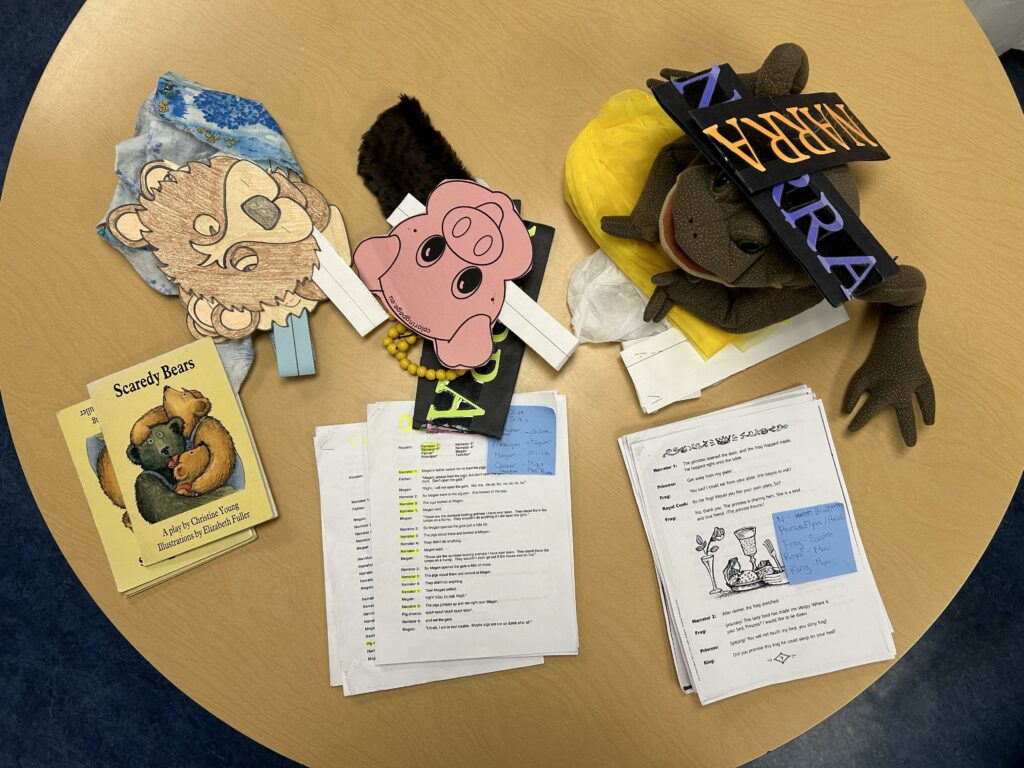The Activity
In the 🌈 grade 3 class, I had the privilege of observing and participating in multiple literacy lessons and activities. My favourite though, was the teacher’s spin on a readers’ theatre activity, easily hitting all the notes on the BC curriculum. The activity departed somewhat from how we were taught by our Drama instructor to conduct a reader’s theatre activity, as the activity incorporated props and physical performance elements. While this makes it less of a pure “readers’ theatre” that focuses on teaching how to convey emotions through strictly verbal cues, it opened the doors to other creative avenues, many of which were enthusiastically engaged in by most of the students.

Curricular Connections
One of the Big Ideas for the grade 3 ELA BC curriculum listed is “Language and story can be a source of creativity and joy”. The stories they acted out were absolutely a source of joy and required an excess of creativity from the students. The group I was participating with spent time applying their crafting skills to create props that represented elements of the story and demonstrated an impressive level of reading comprehension. For example, when we got to a point in the story that had a character that was a principal, the students made a paper mug with “World’s Best Principal” written on the side.
As for Content, the curriculum lists “Language features, structures, and conventions: features of oral language including tone, volume, inflection, pace, gestures”. Though this readers’ theatre activity wasn’t solely focused on reading and playing with elements of oral language, it still gave plenty of space to the students to play with the features of oral language listed in the curriculum. The students were required to infer the appropriate tone, inflection, and volume of the characters’ voices by analyzing the context of the story, empathizing with the characters’ emotions and situations.
The lesson also applied to the BC curriculum Curricular Competency: “Use oral storytelling processes – creating an original story or finding an existing story (with permission), sharing the story from memory with others, using vocal expression to clarify the meaning of the text”. Though most of the students needed to use the readers’ theater script often as reminders of their lines, several students took the initiative to memorize the majority of their lines, eagerly narrating the story or engaging in-role as characters.
Reflection
What a great experience. I would definitely use an activity like this in a literacy unit as a teacher. I noticed that some of the students were less than comfortable and struggled with projecting their voices adequately. They may have benefited from some of the drama warm-up activities we learned from our Drama instructor. With respect to literacy, however, it was a smashing success. All of the performing students were silently reading along to help keep each other on track and also for when their cue came up. This ensured that everyone was actively participating.
